Thai cuisine is renowned for its unique and distinct flavours. Whether it’s a traditional meal or a Thai inspired recipe, the Thai taste is best achieved by using the quality ingredients and authentic herbs and spices. For those of you looking to get started or improve with your Thai cooking, in this blog we’re sharing 15 essential ingredients to have in your Thai cooking grocery list to ensure you can make a range of delicious and authentic recipes, from Thai green curry to Pad Thai.
It goes without saying that coconut milk is an absolute staple for cooking Thai cuisine. You will find coconut milk in a wide range of Thai recipes from soups such as Tom Kha Gai, Thai curry recipes which all require coconut milk, some dipping sauces, Thai desserts and so much more. The important thing when it comes to using coconut milk in Thai cooking is to use good quality coconut milk that is rich and creamy in texture, has a well balanced fragrance with a subtle but still delicious flavour.
The best coconut milks have at least 50% coconut extract, however, this alone isn’t the only factor to consider when choosing a coconut milk. The quality of the coconut milk is determined by the quality of the coconut used to make it because most brand coconut milks don’t contain many additional ingredients. We recommend using coconut milk from the most authentic brands which guarantee quality such as the ones we stock here at Thai Food Online including Aroy-D, Chaokoh, Thai Taste and Suree.
Bonus Tip: Coconut milk is actually a great ingredient to keep and store in the freezer. It can be frozen, thawed and refrozen while still maintaining its taste and fragrance. This is great for those of you who want to have the best coconut milk available.
If you want to achieve the perfect savoury flavours in your Thai cooking, fish sauce should be an essential ingredient in your kitchen. It is widely used across different Thai recipes to season food and add delicious salty flavours - For reference, in the UK it can be compared to Worcestershire sauce in how it brings out the flavours of other ingredients in a recipe without being overpowering.
Fish sauce is nothing like Worcestershire sauce in flavour, however. Naturally it adds flavours and undertones of fish to Thai recipes which come from the anchovies from which it is derived. These anchovies are typically fermented over at least 2 years in salt and water.
Much like coconut milk, no two fish sauces are made the same. Again, this will be down to the quality of the percentage of anchovies used and the fermentation process and possibly any additional ingredients which might make a particular fish sauce taste unique. You will find some fish sauces actually have sugar as an ingredient to balance out the salt. It’s worth testing different brands to get an idea of your preference.

Thai bird's eye chillies are the most well known Thai chilli across the world and so of course make an important ingredient to have at hand in your Thai kitchen. In Thailand, these chillies are known as ‘Prik Kee Nu’ and are used in many Thai recipes from home made curry paste for Thai green curry, stir fries, popular salads including Papaya Salad, Green Mango Salad. Birds Eye Chillies can even be ground up and served as a condiment at a Thai dinner table. This chilli will also compliment a range of other herbs and spices already in your kitchen such as garlic and coriander.
Regular limes are used often in Thai cooking to add natural hints of saltiness and tartness to meats, marinades, salads, dressings and even dipping sauces. These are always great to have laying around in the kitchen.
Kaffir lime leaves are also widely used and are well known for their wonderful aroma and with this they enrich Thai recipes such as curries, soups and cooking pastes with amazing smells. We must emphasise however, that only fresh and frozen kaffir lime leaves give off the zesty and almost addictive aromatics that is loved in Thai cooking, dried kaffir lime leaves don’t offer the same quality in smell or taste.
We all know nothing beats the authentic flavours of a homemade Thai curry paste. We’re also sure that you will probably find the flavours even more rewarding, knowing that you ground each of the fresh ingredients together either in a pestle and mortar or food processor. However the truth is, even the professionals like to use ready made Thai curry paste from time to time.
The ready made stuff is not only great for saving time but considering how many fresh ingredients can go into making a curry paste, it’s also great for saving money too. There are many Thai curry pastes out there but few achieve the truly authentic flavours of freshly made Thai paste (not if you’re getting them from a western supermarket that’s for sure).
Fortunately, we stock the best tried and tested, professionally and Thai people approved curry pastes. Catering to a variety of dietary requirements, on our website you can find regular Thai curry pastes from the brand Mae Ploy, gluten-free curry pastes from Thai Taste and vegan curry pastes from the brand Aroy-D.
Eaten both as part of a main course and as dessert, rice is a well known staple food for Thai cuisine. You might have guessed by now that Thai cuisine boasts fragrance just as much as flavour and that’s no different when it comes to the beloved Jasmine Rice, which is fragrant, aromatic and slightly nutty in flavour in comparison to standard long-grain or basmati rice.
But rice in Thai cuisine doesn’t stop there. Thai cuisine also makes great use of glutinous rice or more commonly known as ‘sticky rice’. This type of rice is well known for the way it clumps together; making it perfect for rolling into balls and dipping into soups and sauces. Sticky rice is most commonly eaten by hand in Thailand.
When it comes to garlic, anyone that really knows how to cook will tell you that garlic is non-negotiable and that goes for Thai cooking as well. Typically used in a crushed, diced or minced format, garlic is used extensively in Thai cooking to add flavour and aroma to dishes. In stir-fries, it can be tossed into hot oil to create a base of flavouring or in more intricate dishes, it might be crushed down into a paste with other herbs and spices in a pestle and mortar before cooking. If there’s one thing you should remember from the whole list of essentials it’s this, ‘don’t skip the garlic’.
When you’re cooking a Thai recipe which requires sugar, you can’t use any old regular granulated or caster sugar. You’re going to need palm sugar. While all sugar can add sweetness to a recipe, when palm sugar caramelises, it offers woody and earthy undertones to the sweetness that make a noticeable difference to a dish.
Palm sugar is commonly found in blocks, which can be shaved off or melted to use the required amount. Some varieties are softer than others and this can be down to preference but all types store very well in the pantry for months.
Lemongrass is probably one of the most better known Thai herbs which is also used often in western cuisine. Much like its name suggests, this herbs brings lemon and citrusy flavours and scents to Thai cooking, which can be achieved by slightly crushing these stalks before using them to cook to help release the flavour.
Lemongrass pairs well with other commonly used Thai herbs and spices such as garlic, chillies and coriander. We would advise that using fresh lemongrass is always best for aroma, however if you want to stay stocked up with this herb in the pantry pickled, dried and powder lemongrass can also be used as substitutes.
Galangal is another essential herb to add to your Thai kitchen. Galangal, while similar in appearance to ginger, is far less spicy but rather more subtly nutty. Both ginger and galangal have their own unique roles in Thai cooking but because of their difference in flavour, we strongly advise against using this ingredient interchangeably when you are cooking Thai food if you’re aiming for the most authentic taste. Galangal can be diced or minced ready to add to stir fries, curry pastes, soups and more to add tart and citrusy flavours.
Much like how regular basil can be very common in a lot of western recipes, Thai sweet basil is also a staple herb in Thai cuisine (along with many other Southeast Asian cuisines). If you’re thinking you can swap Thai sweet basil for your regular, Italian or ‘genovese’ basil - think again!
Thai sweet basil is very different in taste and is also able to endure high temperatures for far longer, making it suitable for the high heat cooking methods of Thai cuisine often uses for food such as curries and stir fries. In terms of flavour, Thai sweet basil can be described as having a liquorice-esque taste with hints of spiciness. Ideal for adding bolder and punchier flavours to food, unlike regular basil.
From Pad Thai to Pad Kee Mao, rice noodles (also known as Rice Sticks or Sen Lek in Thai) are always a great carb ingredient to have stocked in your Thai kitchen. Even if you’re not cooking a traditional recipe, there are so many Thai inspired meals and recipes to be made using rice noodles which can also help you use up your fresh Thai produce. Rice noodles typically come in 4 main sizes of width: 1mm, 3mm, 5mm and 10mm. Wider noodles are usually used for recipes such as Pad Kee Mao (Thai drunken noodles) but it’s always ultimately up to preference.
When it comes to seasoning your Thai cuisine, white pepper is a key ingredient! It’s a little known fact that you will find some cooks and fussy chefs fighting to get their hands on the freshed and best quality white pepper in Thai food markets.
In the west, white pepper can be found in a powdered form and is the most common variety of peppercorn used in Thai food, typically used to season food on a plate after it’s been cooked (much like table salt). This ingredient really compliments lighter and either tasting dishes and is also known to enhance the appetite, so if you want your dinner guests to clear their plates, you can’t go wrong with dusting some white pepper powder on your homemade Thai cuisine.
There are so many varieties of soy sauce available but when it comes to Thai food, there’s only 2, possibly even 3 you really need to have. That’s light soy sauce, dark soy sauce and optionally dark sweet soy sauce.
Light soy sauce is used the most often in Thai cooking for it’s flavour, while dark soy sauce, although it also adds flavour to Thai recipes, is more used to add rich dark hues to food that could benefit from more colour. Sweet dark soy sauce is the middle ground and can be used to add smoky flavours to dishes like drunken noodles.
We would always recommend using soy sauce from Thai brands in Thai cooking because these are readily made to complement the flavours and types of cooking methods used. However, any good quality soy sauce within these three varieties will work great.
Shallots are also known as the Thai red onion (or simply red onion in Thailand) and form the essential basic ingredient to have in so many recipes. Shallots, along with garlic work as a great foundation for flavours for Thai stir fries, salads or when preparing laab namok (Thai minced pork). Much like onions, shallots can keep well in the kitchen pantry and a great to have ready to use in Thai cooking.






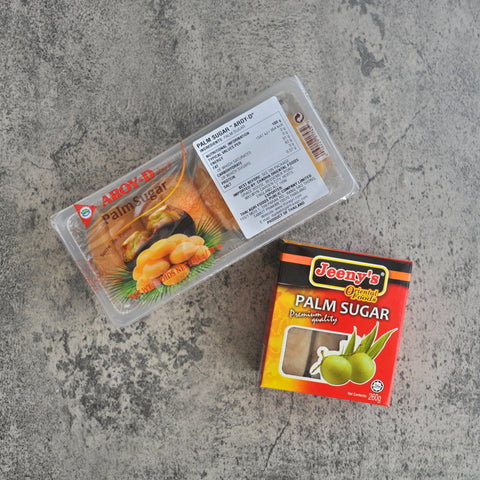



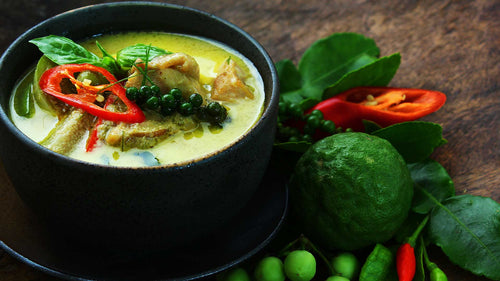
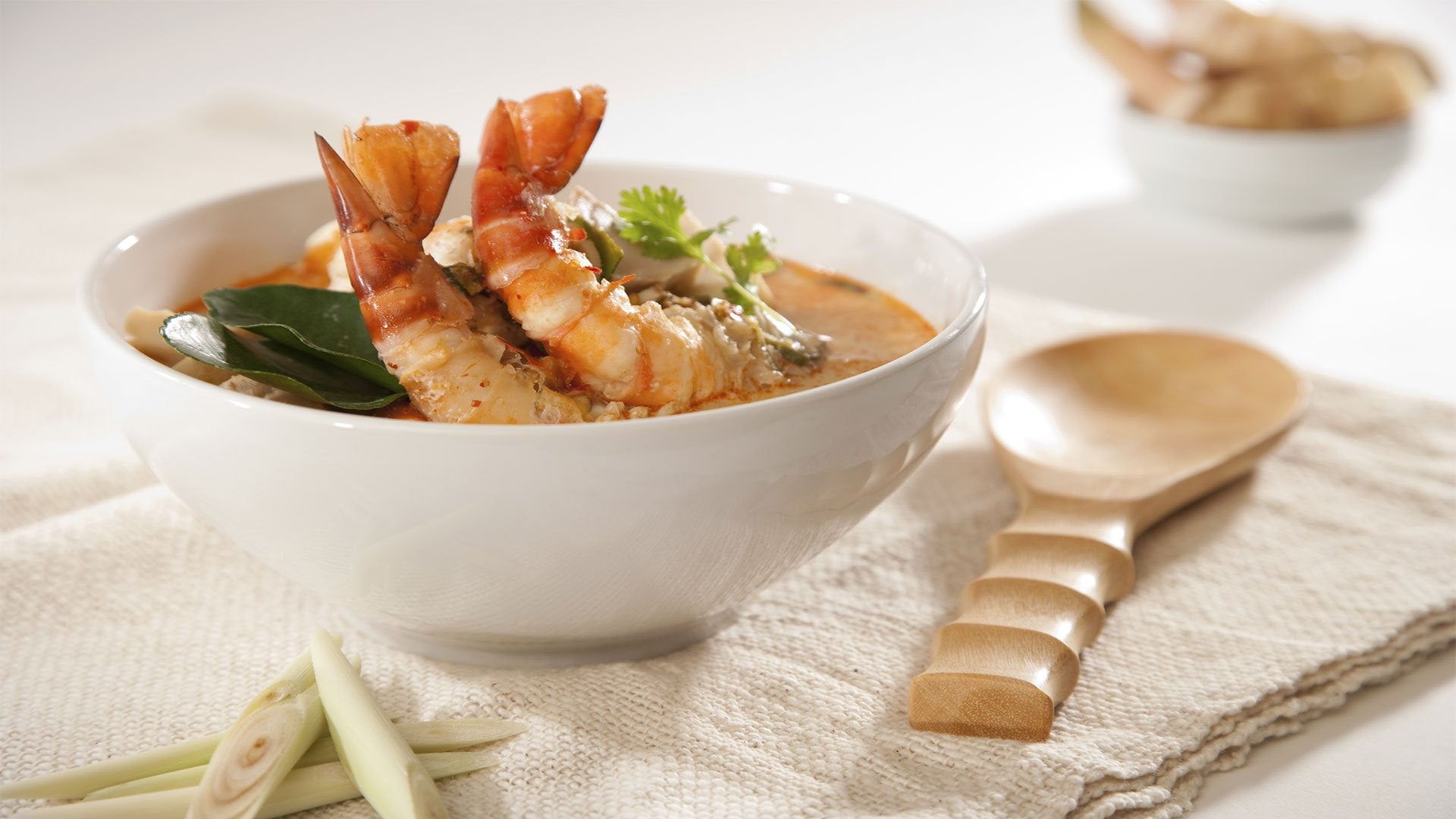
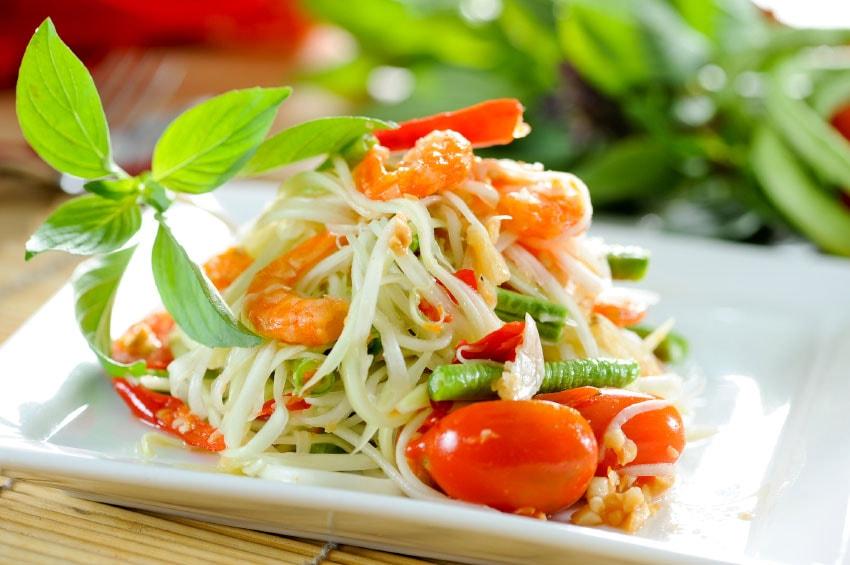
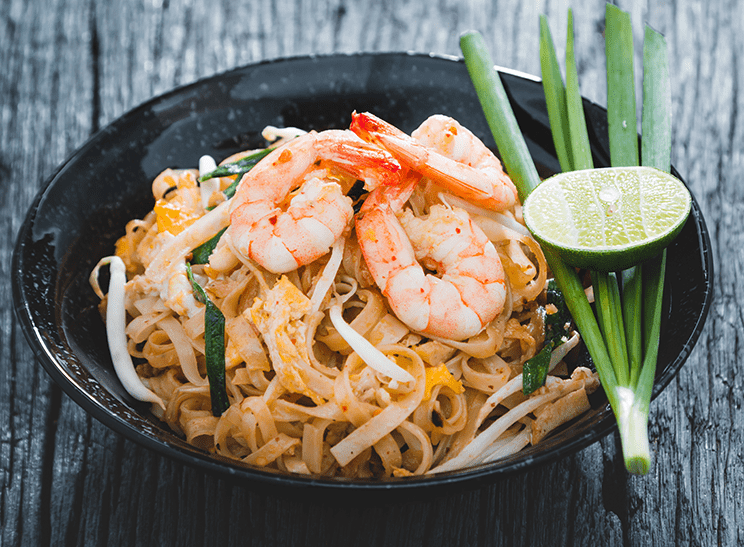



Leave a comment